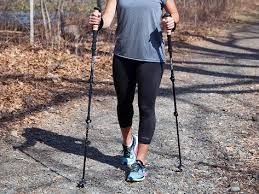
Diagnosed with Cancer? Your two greatest challenges are understanding cancer and understanding possible side effects from chemo and radiation. Knowledge is Power!
Learn about conventional, complementary, and integrative therapies.
Dealing with treatment side effects? Learn about evidence-based therapies to alleviate your symptoms.
Click the orange button to the right to learn more.
- You are here:
- Home »
- Blog »
- side effects ID and prevention »
- Cancer Survival- Fall Prevention
Cancer Survival- Fall Prevention
“Falls in older adults with cancer are more common than in the general population, and are associated with risk factors unique to people with cancer”
Fall prevention has become a priority for me. I am a long-term cancer survivor who falls about once or twice a year. I have a long-term side effect called radiation-induced lumbo-sacral plexopathy (RILP). Repeated radiation to my iliac crest caused extensive nerve damage. I’ve hurt myself a few times but I’ve never broken any bones.
Being a somewhat independent person, I never gave my occasional falls much thought until my mom fell in her garden, broke her hip, and moved to assisted-care shortly thereafter.
Living with multiple myeloma is difficult. Managing bone health is critical for us. A fall leading to a broken hip could spell disaster.
My independence is important to me so I have learned to walk with hiking poles as aides. The image to the left is what I look like when I walk. I exercise those muscles that have weakened.
I wear ankle-foot orthotics (AFOs). My wife and I downsized from our house (lots of stairs) to a condo (no stairs).
In short, several lifestyle therapies that add up to fall prevention. Several of the links below talk about fall prevention.
BTW, I use Montem Hiking Poles. Just like the ones in the picture. Light, strong and functional. I recommend them.
Like I was saying. If you are a long-term cancer survivor who has undergone aggressive toxic therapies, at any age, there is a pretty good chance that you can experience side effects that can damage your stability and your balance. Therefore you are more prone to falls.
Consider:
- Walking aides- AFO’s, Walking sticks (see above)
- Supplementation to strengthen bones such as vitamin D3-
- Frequent, moderate exercise- PE your leg, hip strength-
- Eventually consider a mechanism in your car to manage the accelerator and brake with your upper body-
And more.
Are you a cancer survivor struggling to keep his/her balance? Scroll down the page, post a question or comment and I will reply to you ASAP.
David Emerson
- MM Survivor
- MM Cancer Coach
- Director PeopleBeatingCancer
Recommended Reading:
- Cancer Prehabilitation-
- Radiation-induced Lumbo-sacral Plexopathy in Cancer Survivors
- Treating Cancer Cachexia
Systematic review of falls in older adults with cancer.
“Falls in older adults with cancer are more common than in the general population, and are associated with risk factors unique to people with cancer. Further study is needed to establish methods of screening older adults with cancer for fall risk and ultimately implement interventions to reduce their risk of falls. Identifying which older adults with cancer are at greater risk for falls is a requisite step to ultimately intervene and prevent falls in this vulnerable population.”
The Complete Guide to Home Modifications to Prevent Falls
“If you have a senior loved one under your roof or living independently nearby, you probably find yourself wondering what you can do to keep them safer. Of all of the risks seniors face, falling is one of the worst. According to the Center for Disease Control, one out of every five falls causes a serious injury, including broken bones or head injuries. The CDC also states that falls are the top cause of fatal and non-fatal injuries in Americans aged 65 and older. Even when falls are not fatal, they greatly impact the senior’s quality of life, and the resulting injuries often mean that the senior is no longer able to live independently…”
Selling a Home with Modifications for Older Adults
“Living with a disability, whether because of age or another lifestyle factor, makes life significantly more challenging. One place where all individuals should feel comfortable is at home. However, most homes are not designed with wheelchair, walker or other mobility assistance devices in mind…”
Fall Prevention
“Did you know that 1 in 4 Americans aged 65+ falls every year? Falls are the leading cause of fatal and non-fatal injuries for older Americans. Falls are costly—in dollars and in quality of life. However, falling is not an inevitable part of aging. Through practical lifestyle adjustments, evidence-based programs, and community partnerships, the number of falls among seniors can be reduced substantially…”
Fall Prevention & Mobility: Practical Safety and Organization Strategies for Seniors
“Making a home safe for a senior loved one does not have to be a massive or costly project. There are small changes you can make each day that, over time, will dramatically reduce the risk of falls. For many, it may be difficult to know what changes to make, especially if we have lived in the same home for decades. Things like furniture placement, a lack of adequate lighting, and clutter on the floor are just a few of the commonly overlooked risks that can cause you to lose your footing. These factors should not be taken lightly. According to the National Council on Aging, falls are the most common cause of fatal injury and the leading source of trauma-related hospital admissions among the elderly. The good news is that most of these falls are preventable…”
Helping a Senior Regain Confidence After a Fall
“Fear of falling represents only one side of the coin, however. After a fall, those fears are compounded because they’ve been confirmed. The result can often be a total lack of confidence about walking and getting around.
Here’s what you can do to help a senior loved one regain his or her confidence if they’ve had a fall…”


